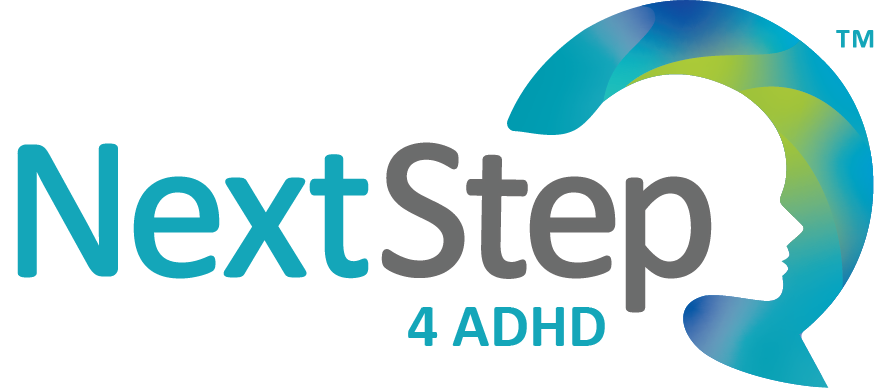
5 Tips for Preparing Your Child for a Telemedicine Visit
In an effort to flatten the curve and reduce the transmission of COVID-19, healthcare professionals across the country are relying more heavily on telehealth. Here at Next Step 4 ADHD, we are proud to offer a variety of services through telehealth – and not just for adults. Children with ADHD don’t have to miss their sessions due to social isolation.
If your child has experience with FaceTime or Skype, he already has a good idea of what a telehealth session is like. Still, the idea of a virtual appointment can be intimidating for some children. If your child is scheduled for an upcoming virtual appointment, it’s a good idea to prepare your child ahead of time.
How to Have a Successful Telehealth Sessions
Here are 5 tips to make the transition from in-person visits to online sessions as seamless as possible.
1. Know what type of session your child is having
At Next Step 4 ADHD, your child can receive a variety of services remotely. This includes:
- New patient diagnosis
- ADHD screenings
- Medication management
- Talk therapy
- CBT
- Coaching
- Education
- Support
When you know what type of service your child is receiving, it’s easier to answer his or her questions.
Reminder: Telehealth sessions are for non-life-threatening visits. If your child is experiencing a serious mental health crisis or another emergency, call 9-1-1 or visit the closest emergency room.
2. Gather important information before the session starts
Before your appointment begins, make sure you have:
- A list of your children’s current medications
- Your child’s medical history, including allergies, weight, and any previous diagnoses
- A list of questions that your child has (if any)
Depending on what type of session your child is having, you might want to write down a list of concerning symptoms that you want to address. Be prepared to answer a variety of questions, including how the symptoms have been occurring, when the symptoms are most severe, and any other related details.
3. Find the perfect location
This is one of the most important steps to having a successful telehealth session. The ideal location is quiet, well-lit, and free from distractions. Consider setting up on the dining room table or in a den. The camera should be eye-level for your child.
If you have pets or other children, make sure they are situated elsewhere so you can focus on the session too.
4. Start with an introduction
You might have a telehealth session with a therapist or pediatrician that you’ve seen dozens of times. But if your child is seeing a new provider, you’ll start with introductions. Let your child know ahead of time if he’ll be meeting a new doctor so he can prepare mentally for the meeting. During the meeting, one of our providers will start by sharing his or her name and title. At this time, encourage your child to introduce himself too! After your child introduces himself, you’ll be asked to confirm a few details too. You’ll already have completed a treatment consent form, but you’ll still confirm your child’s name, date of birth, etc.
Tip: If your child is nervous (which is normal!), practice introductions beforehand!
5. Know your next steps
Before your child’s telehealth session ends, make sure you understand the provider’s diagnosis, instructions, and/or advice. Keep a notepad handy so you can take notes during the session, if needed. Don’t hesitate to ask for clarification! We want to make sure your session is valuable and helpful.
Remember… We Are Here for You Too!
Working at home and doing school work at home is new to many families. During this adjustment period, it’s normal for kids to feel scared or nervous. Let your child know that we are here to help! We have created several resources and programs to help parents create learning environments at home.
- 9 Parenting Tips to Survive Isolation with Your Kids (and Maybe Enjoy It)
- Establishing a Home School Schedule for Your ADHD Child with Next Step Pediatrician Dr. Kristi Briscoe
- Motivating Your ADHD Child to Work Independently
- 8 Tips to Help Your Child with ADHD Thrive with E-Learning
- Surviving Online Learning: A Guide for Parents + Free Printables
Questions? We’re Just a Call or Click Away
At NextStep 4 ADHD, we’re happy to provide comprehensive care for ADHD — for you and your children. If your child has ADHD, we don’t want him or her to miss out on valuable sessions. Whether you’re interested in receiving a diagnosis, therapy for your child, or other services, we are here to make sure your telehealth experience is successful. Give us a call or send us a message to request more information.
Don’t forget to sign up for a membership so you can stay up-to-date with the latest news!
Learn More
8 Tips to Help Your Child with ADHD Thrive with E-Learning
As the pandemic continues to makes its mark across the country, business and schools continue to adapt. Some have returned to in-person operations (with restrictions), some continue to operate remotely, and some fall into a hybrid of the two. For schools, this means making necessary changes to in-person schooling. Some school districts have mandated virtual school for at least part of the year. This means a great number of children are learning at home with e-learning. Although these efforts are good (in an effort to slow the spread of the disease), e-learning can come with a learning curve if you’ve never had to do it. Children with ADHD may struggle with a few new challenges, such as avoiding the distractions of their toys and games.
Here at Next Step 4 ADHD, we are proud to offer support and tips to help your children thrive, especially when facing new situations.
Psychological Associate Monica Clark has curated a list of several tips to help your child with ADHD experience an enriching e-learning experience.
Use These Tips to Help Your Child with ADHD Thrive with E-Learning
1. Maintain schedules and routines
Children with ADHD need structure and predictability to thrive. Maintaining their routines will increase chances for success. This means maintaining bedtime routines and sleep schedules, wake up times and morning routines, and meal schedules. Morning routine should be as similar as possible to routines when your child would be going to school (i.e. encourage your child to wake up, eat breakfast, and complete morning hygiene, including changing out of pajamas). This will signal to your child that it is time to be ready for the day. Meal times, especially lunch and snacks, should be consistent with when your child would eat at school.
Maintenance of routines will also decrease difficulties when your child inevitably transitions back to school.
2. Continue all medications
While your child is not in the school environment, they are still in a learning environment. It is important to maintain medication schedules as though your child was in school.
3. Provide some control
Learning from home provides your child with an opportunity to have a greater amount of control over their day and learning environment. Provide your child with a list of tasks and assignments that must be completed during the day and allow them to choose which order they will complete them in. Encourage your child to alternate preferred subjects with less preferred subjects. Provide your child with a schedule of the school day and have them note in which hour of the day they will complete each assignment. This will decrease arguments between you and your child related to order of assignments while providing your child with structure and predictability in their day.
Tip: Provide both 10-minute and 5-minute warnings when it is time to transition from one task to another.
4. Remember to include structured enrichment activities during the day
When attending school, children engage in a structured enrichment activity almost daily, such as P.E., art, or music. Including this in your child’s schedule will provide them with a much-needed release in their day. You can find fun arts and crafts activities, free musical instruction, or physical exercises online. Some museums are even offering virtual tours. (Check out the National Museum of Natural History tours here.)
Other ideas: Walking in your neighborhood for a bug or scavenger hunt, taking a bike ride, or going to the park to shoot basketball, kick a soccer ball, or other such activity would also be beneficial.
5. Provide a clean, distraction-free environment
Children should have a designated location to complete schoolwork. Work environment should have a desk or table that is free of clutter and distractions. Have your child’s books, papers, and other needed items stacked and organized neatly in the same room.
Hint: Having the items in the same room, but not within an arm’s length provides your child with much needed movement breaks during the day without encouraging long and distraction-prone trips to other rooms.
6. Encourage movement and breaks
Encourage your child to take a 5-minute break at the end of each hour. Encourage expenditure of excess energy during these breaks by engaging in a fun activity with your child, such as:
- Dancing to their favorite song
- Having a jump rope competition
- Racing around the yard
Longer breaks of approximately 15 minutes should occur twice during the day. During these longer breaks, children should be encouraged to play outside or, if weather does not permit outside play time, encourage your child to engage in high-energy activities, as described above. Do not allow screen time during breaks.
7. Don’t stress about fidgeting
Research has shown that children with ADHD learn and focus better when allowed to fidget or squirm in their seats. This behavior is often problematic and redirected in the classroom because it presents distractions and creates learning challenges for other students. With learning from home, you can allow your child the freedom to fidget and squirm as much as needed as long as they are focused and completing their work. This may actually enhance their ability to learn and be more accurate in their responses. You may find that fidget spinners or other tools are useful.
8. Remember, your child is anxious too
While being faced with the challenge of becoming a teacher for your child is anxiety-provoking, please remember that your child is anxious too. When children with ADHD are anxious, it may lead to a worsening of ADHD symptoms, including:
- Poor focus
- Difficulties completing tasks
- Restlessness
- Impulsivity
Emotional meltdowns are also common.
Using positive parenting strategies may help your child to combat some of these difficulties. Praise your child and help them to see what they are doing right rather than focusing only on what they are doing wrong. Setting up a rewards-based system, such as a points or sticker chart, where your child can earn rewards for completion of desired activities or behaviors may also be beneficial.
Remember that rewards for positive or desired behavior are more effective at managing behavior than consequences and punishment for problem behaviors.
Questions? We’re Just a Click Away
If your child is struggling with the symptoms of ADHD, we offer telehealth sessions so you can continue to get the care you need. Give us a call or send us a message to request more information.
Don’t forget that you can also request an appointment right here.
Learn More
A Letter to Our Patients Regarding Coronavirus
With the recent announcement of a case of Coronavirus in both Louisville and Lexington, Next Step is prepared and has taken precautions to support our clients.
Currently, you can call our office and change your appointment to a telehealth visit. Receive the same care and treatment from the comfort of your home, office, or use your mobile device.
We are still open and will provide you with updates as changes occur.
Who Should Consider a Telehealth Visit?
If you are feeling under the weather, it’s good practice to stay home from work or school, whether you have a cold or the flu. This helps prevent the spread of diseases to others. A telehealth visit may be right for you if:
- You are currently sick
- You have been recently exposed to someone who was ill (even if you don’t have symptoms yet)
- You have a compromised immune system or are undergoing chemotherapy treatments
General Hygiene Practices to Follow
As during any cold and flu season, it’s always important to refresh your disease prevention strategies.
According to the CDC, you can ensure proper hygiene with these tips:
- Wash your hands often for at least 20 seconds with warm water and soap.
- Wash your hands before/after preparing food, after blowing your nose, after coughing, and after using the restroom. Wash your hands when you return home after being out in the public.
- Use hand sanitizer when there is no access to soap and water, but do wash your hands as soon as you are able.
- Avoid touching your eyes, nose, or mouth.
- Cough into your elbow, not in your hands.
- Stay at home if you are sick and keep your distance from family members in your house.
- Avoid unnecessary travel, particularly to heavily infected areas
You can also bolster your immune system by:
- Eating a healthy diet
- Staying hydrated
- Prioritizing quality sleep
- Exercising regularly
- Practicing stress management techniques such as deep breathing or yoga
Ready to Schedule Your Telehealth Appointment?
At NextStep 4 ADHD, we’re happy to provide comprehensive ADHD care. If you or a loved one needs to schedule a telehealth visit, we are here to guide you with your next steps. Call the location of your choice, or send us a message to request more information.
References
- https://www.cdc.gov/handwashing/when-how-handwashing.html
Learn More
